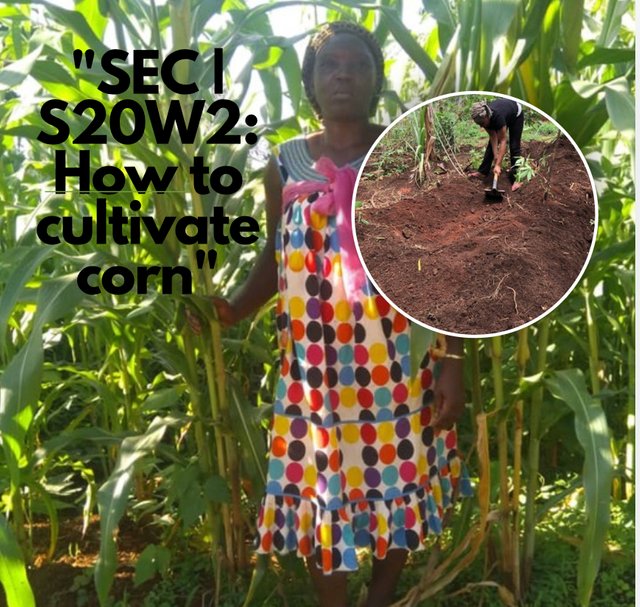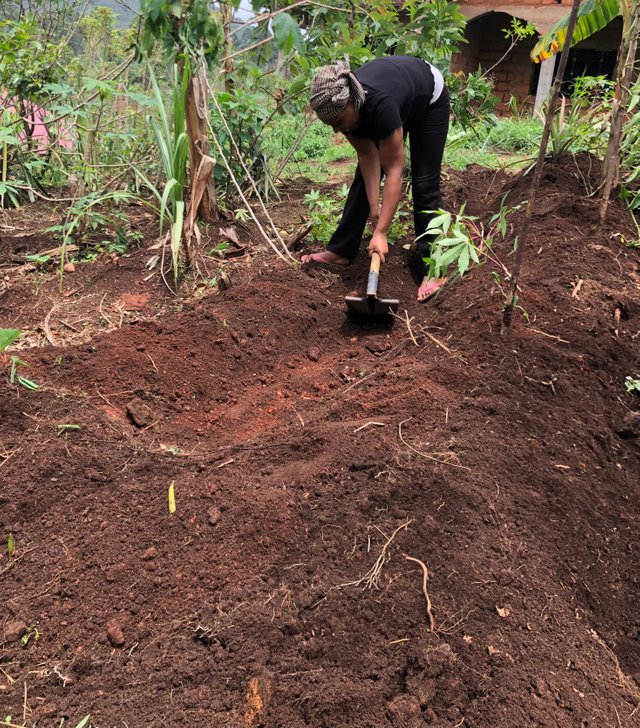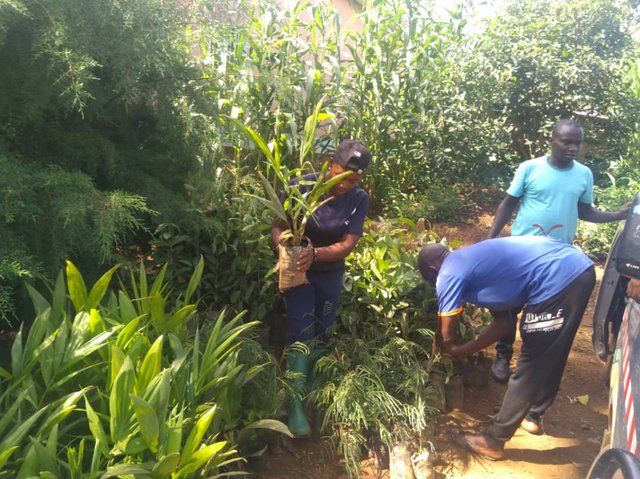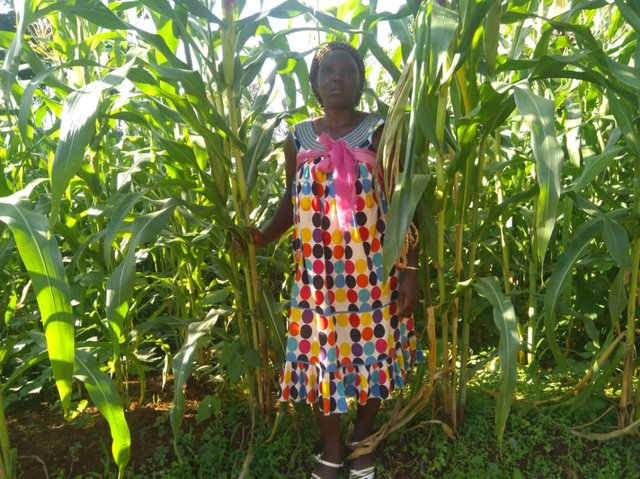"SEC | S20W2: How to cultivate Corn"
Steem greetings all the way from the motherland-Cameroon where agriculture is the number 1 priority. It is a great privilege to learn about paddy cultivation but in my region just a few of about 5% of the population venture into rice cultivation. This is because the land available for rice cultivation is small and not everyone can farm rice.

That said, other grain crops are cultivated on a large scale such as corn. I could not physically go to a maize farm before writing this challenge because we are presently observing 2 weeks of lockdowns imposed on us by separatist fighters. However, I will use some old images and royalty-free images to illustrate my content. My ideas will be presented following the guiding questions below👇👇.
What is the method of corn seedbed preparation and what steps are taken in preparing the soil for corn cultivation?
The method of corn cultivation in Cameroon differs from region to region and is also based on whether it is a large-scale producer or small-scale, producer. I am a small-scale producer and will share the method of seedbed preparation according to my farm size. In my region, we used some insecticides to spray around the land or clear off the grass and plough the soil into ridges. In other regions of Cameroon, farmers do not form ridges because rainfall is not intensive.
We plough the soil into ridges to avoid soil erosion. We often experienced high rates of precipitation and also the hilly nature of our landscape forced farmers to plough ridges which will help to prevent soil from being eroded during high rainfall.

After ploughing the ridges, we placed organic manure either from cow dung or fowl droppings measuring about half a cup 1/2 meter apart. This is to boost yields. We use our fingers to mix the manure with a bit of soil. This is to avoid overheating from the manure that can affect the corn seeds when planted directly in the manure.
It is also important to plant eco-friendly trees around the farm to help shed wind from destroying the corn when the easterly winds blast.

Go ahead and plant your corn in the mixed manure with a bit of soil and do not bury the corn too deep into the soil, else the corn seedlings might rot and not germinate.
What is the importance of planting corn seeds at the right time?
Just like any other seedling, corn has a specific time to plant based on the availability of water. Our planting of corn is done during different phases throughout the year.
The first phase of planting is done around March when we experience the first rains. In some years the first rains might be in February and this is as a result of climate change.
The second phase will be done around September. This is done mostly in wetland areas.
When you plant on time, the seedlings get enough rain and sunlight to grow well and of course good yields.
How is regular irrigation and fertilizer applied after sowing corn seeds?
As I earlier said we plant in seasons and do not require irrigation systems in corn cultivation.
The planting seasons are in March and September. In March, we plant in dry areas that require lots of rain to produce and in September, we plant in wetland areas as the dry season approaches.
After planting the corn seeds, they are allowed for a period of about 45 days. From 46 days, some corn roots will be visible on the surface and require mulching. Before mulching, a smaller quantity of fertilizer is sprinkled around the base of the plant. The fertilizer should not be applied directly to touch the corn stem else it will cause the corn to die off.
Cover the fertilizer was applied around the corn plant base with soil. This will help kill off some weeds and also will return moisture and boost plant productivity.

What are the major pests and diseases of corn crops, and how can they be controlled?
The major pests and diseases that affect corn cultivation in my region are locusts. This is usually because of delays in rainfall or drought. We suffered from a locust attack on corn last year due to a delay in rainfall.
It is difficult to detect when exactly rainfall will start given the fact that we are suffering from signs of climate change. To resolve the issue of locusts, farmers should master their environment and know when to plant on time.
At times we plant the same portion of land 2 or three times. It seems as if the soil is eating the seeds and they cannot germinate properly. Treat your seeds with pesticides before planting to prevent soil insects from eating the seedlings before they sprout.
What are the next steps after harvesting the corn and what are the steps to be taken to preserve the corn?
Harvesting starts from day 100 for corn planted in March. This is to prevent rains from penetrating into the corn.
For corn planted in September, harvesting starts in December. This period is less stressful because there is an abundance of sun to dry off the corn.
We developed local means of preserving the corn since it is not on a large scale. After the corn had dried off well, we separated the grains from the sticks and stored them in a container. Harvest some stems of the cypress tree, dry them and put them inside the container of maize. The cypress will help prevent weevils from damaging the grains.
At this juncture, I can say that corn cultivation is done in phases in my locality due to changes in temperatures and weather patterns. The process starts with preparing the land, planting, harvesting and preserving. Without properly following the steps, your yields might be affected and you record a poor harvest. I will invite @majerius, @saxopedia, @rafk and @m-fdo to join and share ideas about grain cultivation in their respective regions.
Observations and suggestions:
It is also important to plant eco-friendly trees around the farm, so that blasts from the east destroy the corn. This is very well said by you ma'am. Permanent farmers of our country do such work. You have a good knowledge of corn seeding time. The importance of sowing seeds on time is immense mam. Sunlight and rain produce good quality seedlings. About 8 years ago in our country the farmer got rid of locust attack with great difficulty. The amount of damage caused by locusts is huge. Farmers really need to be very careful about this. After reading your post, I understood that you have a lot of knowledge about corn cultivation, ma'am.
Feedback:
It was a nice experience learning paddy cultivation and also sharing my knowledge about corn cultivation. I appreciate your time reading through and providing feedback.
Thank you @wilmer1988 for the support.
The support is greatly appreciated 🙌🙌.
Thanks for inviting me to ma'am. Your post reminds me of the past days. We use to go to the farm and work intensively especially when. It's spring fall.
Just as explained, the first quarter of the year is use to plan corn and other crops like beans or groundnuts. The first rains are crucial and the well being of the crops solely depends on it for initial root shoot.
I enjoy you sharing your methods with us and perhaps I will definitely share something interesting too.
Good luck in the contest
Nice post! I also want to tell everyone that regular weeding is also very important in paddy cultivation. It greatly increases crop yield."